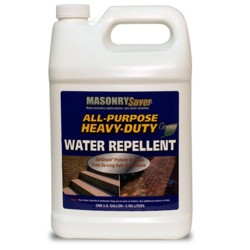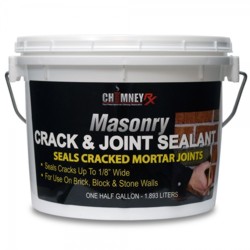Shingle Granule Loss

These shingles were supposed to last over 30 years, but after just 14 years, they need to be replaced! Photo credit: Tim Carter
DEAR TIM: In the past year my asphalt shingle roof seems like it has really started to go bad. I see large areas of my shingles that have no granules.
You can see the fiberglass fibers in the mat. The disturbing part is my roof is only 14 years old and the shingles came with a 30-year guarantee.
Why is this happening, is it normal and what can you tell me about the shingle-aging process? How can you get the most life out of asphalt shingles? Diane B., Pullman, WA
DEAR DIANE: Believe it or not, I’m in the same boat you’re in. I wonder if we have the same shingles made by the same manufacturer. This coming spring I’ll be replacing my roof with no help from a manufacturer who’s name only contains three letters two of them vowels. They’re running away from a major defective shingle issue and my guess is that thousands of homeowners are getting the shaft like I am. You may be one.
Are asphalt shingles easy to install?
Asphalt shingles are probably the most common roofing material here in the USA because they’re relatively inexpensive to manufacture and install. Believe it or not, I could teach you how to install standard shingles in the large field areas of your roof in less than five minutes. It’s that easy.
What are the components of asphalt shingles?
The three basic components of asphalt shingles are the mat typically made from fiberglass, the asphalt and the colored ceramic granules that provide color and invaluable protection from the best or worst that Mother Nature can deliver. Some shingles have other invisible additives like powdered limestone to add weight to the shingles.
What most people don’t know is that the asphalt used to create shingles comes in all different grades and levels of quality. It’s possible that one manufacturer may intentionally buy a cheaper grade of asphalt so they can make more money at the end of the day. Talk off the record to any chemist that works in a lab for any plant that deals with asphalt as a raw material and they’ll confirm this.
The chemical properties of the asphalt are vital to a shingles ability to withstand the harsh conditions shingles experience. After all, it’s the adhesive that holds everything together. If the asphalt is poor quality, if there’s too much powdered stone filler in the shingles or the manufacturing process is not great, the granules will eventually come off the shingles much faster and in greater amounts than is normal.
Do shingles normally lose the colored granules?
It’s normal for shingles to lose the colored ceramic granules as is happening to you and I. However, it’s not normal for it to happen when the shingle’s only halfway through it’s expected life span. To put this in perspective, the last house I lived in had an asphalt shingle roof I installed. It was a standard three-tab shingle with a modest 15-year warranty. After 22 years, the shingles were still in great shape and probably would have lasted another seven years. I only replaced the roof because I was selling the home and knew a new more decorative roof would create lots of curb appeal.
The ceramic granules on asphalt shingles provide a very important function. They shield the asphalt and the fiberglass mat from the ultraviolet (UV) rays of the sun. These UV rays will rapidly disintegrate asphalt and the thin fiberglass mat. Also, as shingles age it’s normal for them to become brittle and crack as the oils in the asphalt are slowly released over time pulled to the surface by the heat of the sun.
Ventilation of the underside of a roof is directly related to shingle lifespan. Poorly ventilated roofs don’t allow moisture in attic spaces to be expelled to the exterior. This elevated moisture under the shingles can cause the wood under shingles to move more than it should leading to premature failure.
Asphalt shingles can be victims of thermal shock countless times during their lifespan. On a blistering hot summer day, the temperature of asphalt shingles can approach 160F. Imagine if a quick thunderstorm flares up and cool rain drenches the roof lowering the temperature of the shingles by up to 100 degrees in seconds. This thermal expansion and contraction can lead to granule loss and cracking over time.
There are quite a few things you can do to extend the life of asphalt shingles. The first thing is to increase the roof pitch. Steeper roofs shed water faster and the same asphalt shingle on a low-slope roof wears out faster than on a steep roof.
Keep roofs clean and don’t allow trees or anything else to rub or scrape across the roof like tree branches. Heavily shaded roofs in moist climates will age prematurely as you’ll commonly discover moss and algae on these roofs that works constantly to break down the shingles.
You can’t have enough ventilation under roofs. You should have continuous soffit ventilation that allow air to enter at the bottom of the roof. I’m a big fan of turbine vents often called whirlybirds. These simple spinning vents can suck vast amounts of air through an attic space working to keep water vapor to a minimum in your attic space. A typical residential home may need three or four turbine vents to get enough air moving through the attic space.
I don’t like to count on just a continuous ridge vent at the top of a roof as they seem to go against the known physical principal that hot air rises. On a calm day with no wind I’ve experimented with incense sticks in my own attic and no air was moving through my ridge vent. The reason is air must go down the roof under the ridge vent before it exits the house. Hot air doesn’t like to go down.
This column was featured as My Roof Job in the May 27, 2015 AsktheBuilder Newsletter.
Column 1073
 |
 |
The above product links are affiliate links. I get a tiny commission if you purchase these from Amazon.
6 Responses to Shingle Granule Loss